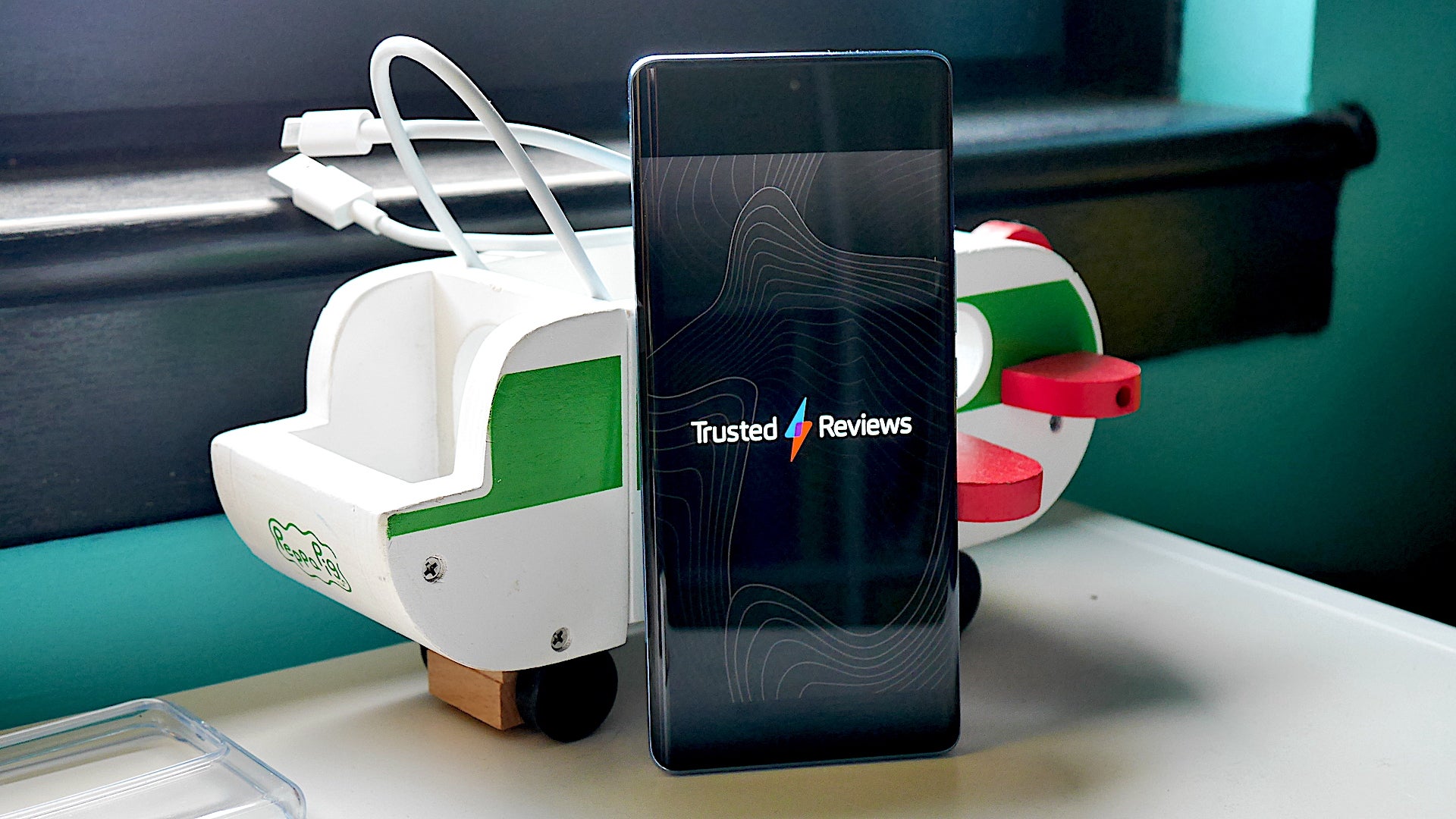Verdict
The Vivo V29 is one of those interesting smartphones that makes a big play on a single feature – selfie quality. That it then is hugely successful as a general camera phone, with mostly good looks, dependable battery life and a bright, detailed screen is a testament to its overall quality. But for a better speaker setup, a bit more power or longer software support, it would be an instant recommendation.
Pros
- Great, dependable cameras
- Nice design
- Fast charging
Cons
- Single bottom-firing speaker
- No stated long-term software support
- Competition is more powerful
-
Impressive camera performanceThe Vivo V29 boasts one of the most capable camera setups on the mid-range market in 2023. -
Fast charging supportWith fast charging and a charger in the box, you’ll go from 0-100% in under 40 minutes. -
Great selfie cameraIn addition to capable rear lenses, the V29’s selfie sensor boasts a slew of options while also being higher resolution than much of the competition.
Introduction
The quest for the perfect selfie has seen many challengers come and go – using innovative sensors, flashes and more as their tools of choice, though arguably none have ever truly succeeded.
With its new entry, the V29, BBK subsidiary Vivo is staking a claim for the prize. It has a super-high resolution 50MP snapper on the front, an innovative Ring-LED flash on the rear, a suite of specialised photo processing options and more, this is a device that on the surface is designed around a single use case.
There’s of course more to a good selfie than specifications, and more to a good smartphone than a singular focus on one area. By specialising too much there comes the danger of losing out to more generally skilled devices from the competition, but by not specialising enough the killer feature might just turn out to be a dud.
At the same price point of around £430/€450 (no confirmed UK price just yet) there’s the Samsung Galaxy A54 5G, the Google Pixel 7a and the Redmi Note 12 Pro Plus 5G, all of which are decked out with specs and ready to rumble.
So does the Vivo V29 make the case for the return of the selfie phone and manage to be a decent smartphone too in the process? Read on for our full review.
Design
- Curved display
- Tall/thin aspect ratio
- Single bottom-firing speaker
For a while, any smartphone that was designed to feel ‘premium’ featured a waterfall display. Curving the screen around the sides to various extremes, it lasted for a year or so, but for the most part, manufacturers have moved on. With the V29 Vivo appears to be trying to buck the decline.
Whatever your views on curved displays might be, the V29 has a pronounced one. It makes the device a little easier to hold, but comes with some tradeoffs.
Combined with a glass sandwich design and a prominent camera island (continent?) This is a very pretty but extremely slippery smartphone. A generic TPU case comes in the box, it is highly recommended that you use it immediately.
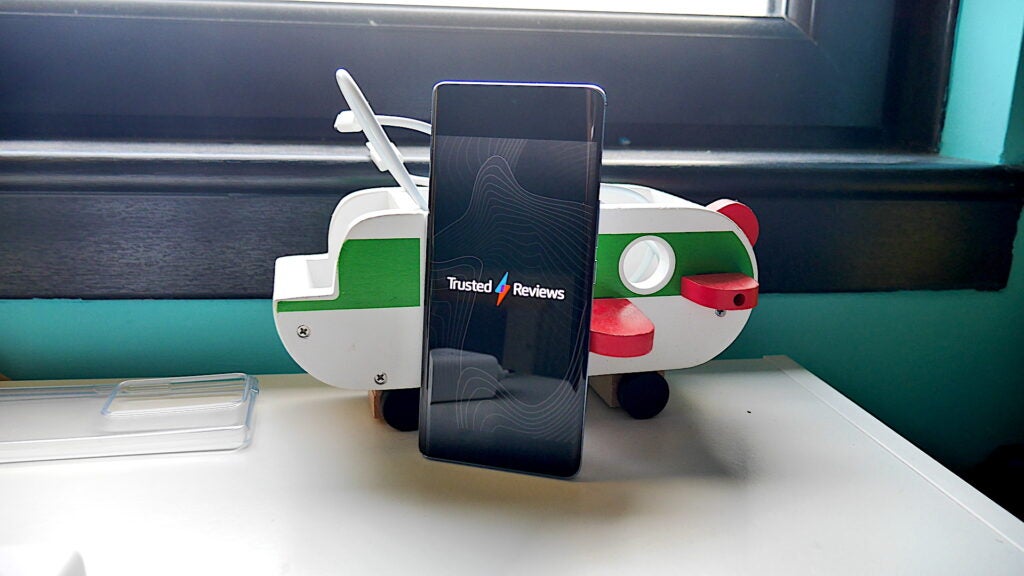
Regardless of this, even with the case fitted, the V29 feels very pleasant to hold and is thin enough to use one-handed. At 186g it is not so heavy as to be cumbersome, but enough to provide a little heft, and at 7.5mm it isn’t the thinnest but feels comfortable. With a 90% screen-to-body ratio, it does a convincing impression of only being a display.
I wouldn’t recommend leaving this with a toddler or a clumsy person however – though it feels sturdy enough and doesn’t bend, a hardwood floor would be its end. This is the biggest tradeoff of any curved display, that even with a case fitted the screen will still be highly exposed to anything that might scratch it, and just that bit slippier in general.
Two colour options are available, Noble Black and Peak Blue, with my review unit appearing in the former. Peak Blue is appealing in person, providing a bit more personality than your bog standard black smartphone.
Under the display there’s a fingerprint reader which I found to be quick and accurate, and charging is over USB-C. There’s no headphone jack, a single downward-firing speaker and no microSD card slot. Lastly, there is only space included for a single SIM, though there is eSIM capability.
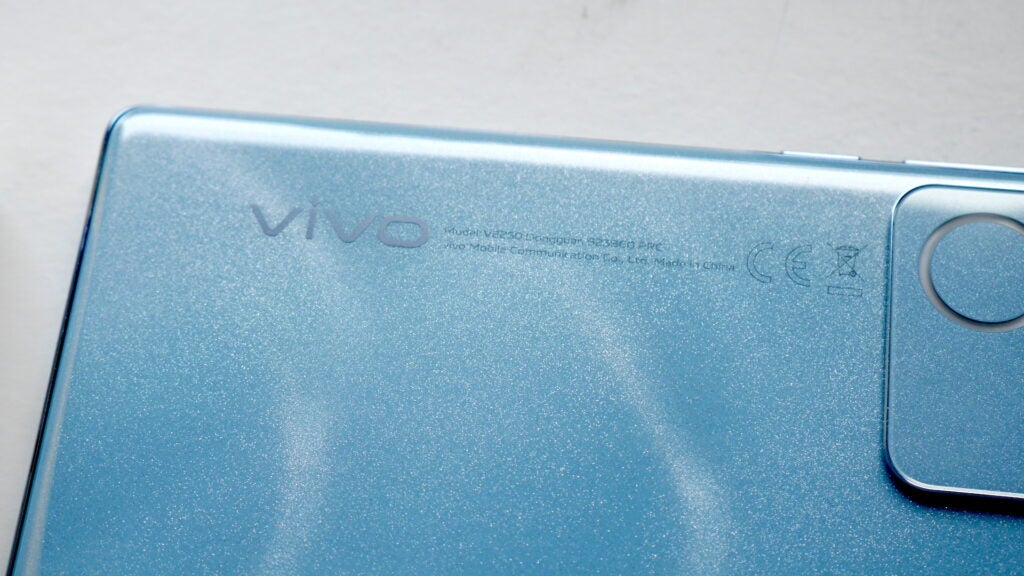
Happily, there’s also waterproofing which is a rarity in smartphones that have their origins in China. The V29 is IP68 rated, which gives theoretical protection at up to 1.5m for 30 minutes, which is an unusual capability for the price.
In all, the V29 feels more expensive than it is – there’s no hollowness or sharp edges and it has a confident overall finish. It looks less Fisher Price than the Google Pixel 7a and less boring than the Redmi Note 12 Pro Plus.
However, there’s no word on what’s recycled and what isn’t, which doesn’t bode well for sustainability efforts.
Screen
- 6.78-inch 1260×2800 OLED display
- HDR compliant
- 120Hz refresh rate
A lot has been said in this review about curved screens and how they impact design and durability, but not usability. So what’s it like to use a screen with such a dramatic curve on the sides as the Vivo V29?
For the most part, fine, you won’t have any issues when scrolling through the interface or reading. Things become a little weird when watching video, where screen space is lost to the curved sides and brightness isn’t uniform. If you are watching from an angle, it can become a little distracting, though this is nitpicking.
At over 1080p but shy of 1440p the V29 has a high-resolution display which has benefits for the viewing experience, making photos, video and text appear sharper. There are some drawbacks in terms of power consumption, but more on that later.
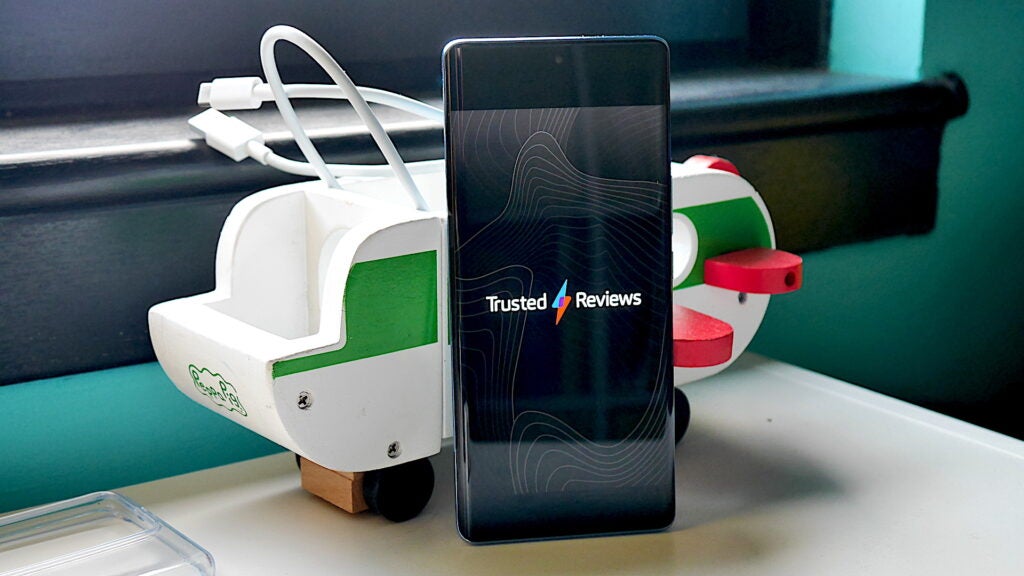
The 120Hz refresh rate keeps the device feeling smooth in general use, even if the likes of the Xiaomi Redmi Note 12 Pro Plus offer 144Hz, the difference in use is negligible. It is an improvement over the 90Hz offered on the Pixel 7a however.
With HDR10+ compliance, supported content on YouTube or otherwise looks bright and detailed, and in general use, the display is colour-accurate. At 6.78 inches the display is as big as it sounds, which means that watching video is generally a treat, though playing games is impacted a little again by the curved sides. As it is OLED, it has plenty of contrast and colours that pop without going overboard.
I found in day-to-day use that the screen could get bright enough to withstand the (admittedly weak) sun this very British summer, and there’s an ‘Extra Dim’ setting that makes reading in bed a pleasant experience.
Cameras
- 50MP selfie camera
- 50MP main camera, 8MP ultrawide, 2MP depth sensor
- Ring LED flash on rear
Typically in 2023, when a smartphone is built around a camera feature, that ‘feature’ tends to be the size of the main sensor on the rear, or the level of zoom it can achieve. To centre a phone on a high-resolution selfie sensor and a flash therefore takes us right back to 2014 and the days of the HTC Eye.
There’s plenty of reason to do this, of course. Smartphones are the primary means by which we record our precious memories, and many of those may be selfies. Instead of using a tiny fixed focus sensor that feels like an afterthought, it’s nice to use something with a little pizazz.
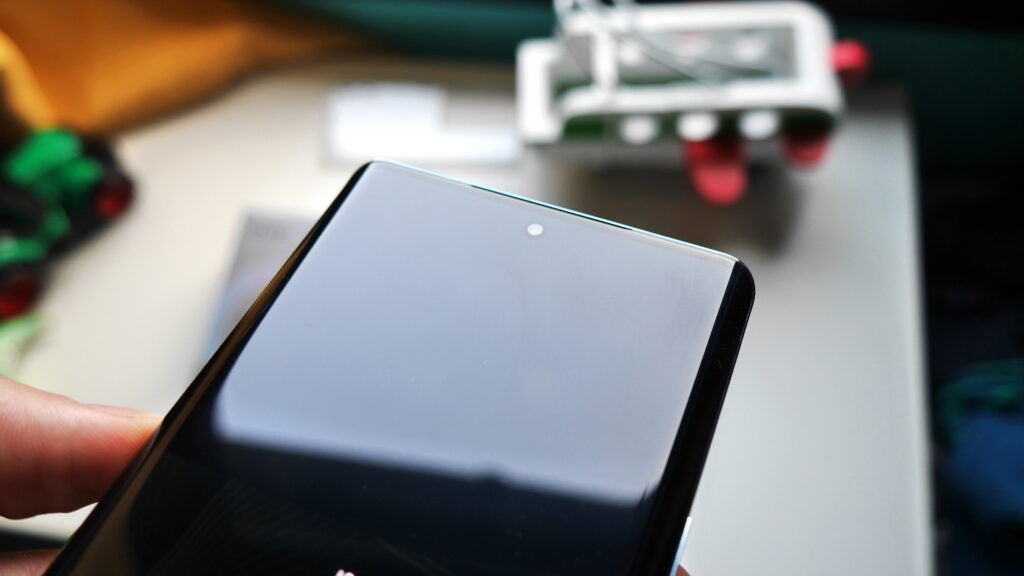
To begin with specifications, the front sensor sports a 50MP resolution, a significantly higher number than most of the competition, and binning to 12.5MP. Importantly, the front sensor has autofocus, which is a godsend for both photo and video. On the rear, there’s a 50MP 1/1.56 snapper with optical image stabilisation, flanked by an 8MP ultrawide and a 2MP depth sensor for portrait mode.
Coming to image quality, I only have positive things to say – Vivo has built a pedigree for camera performance in its devices and it shows. Detail in any given image is abundant, with no trace of oversharpening, the processing is clear and natural in its approach. Colours are saturated by default, but the ‘Natural Colours’ toggle allows this to be toned down. Dynamic range as a whole is very wide, but retaining contrast, and images are mostly noise-free.
Low-light is similarly a success. Either with the standard long-shutter or the built-in night mode, images produced are full of detail, light, colour and contrast. The built-in tripod mode can illuminate even the darkest scenes. Just as importantly, capture times are quick, making this one of the best mid-range camera phones on the market at the moment. There isn’t a zoom camera, but this is expected for the price point.


I wouldn’t normally dedicate much time to discussing the flash on a smartphone, but the one on the V29 is special. It is a ‘Ring LED’ flash, which means it is significantly larger and has better coverage than the standard two-stage smartphone flash. It allows for better illumination when working in very low light, and is superior to standard flash.
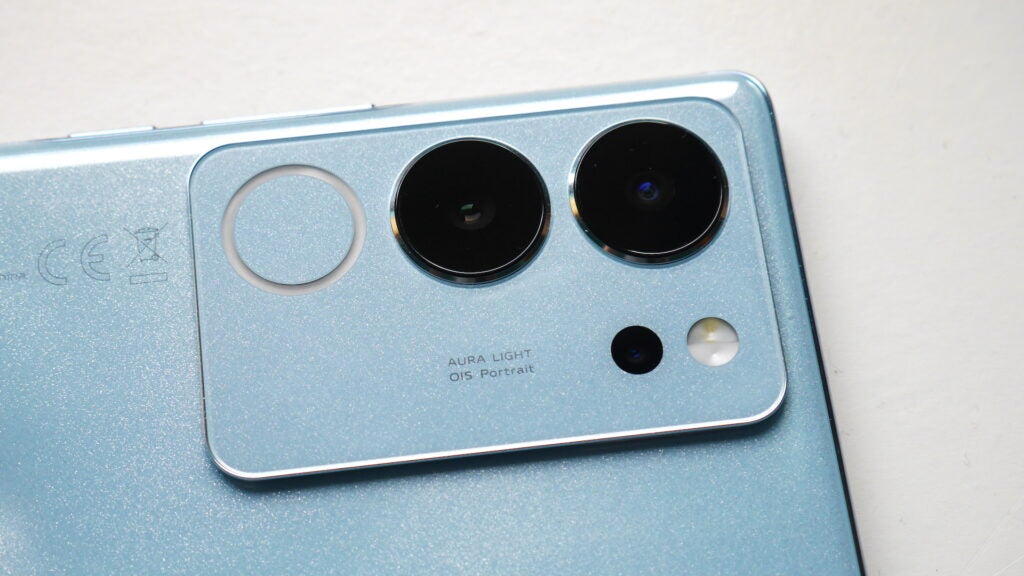
Performance by the ultrawide is similar to the main sensor for the most part, with the proviso it isn’t stabilised, is lower resolution and is a smaller sensor, with everything that entails.

Now for the star of the show, the selfie sensor. Well, there isn’t much to say as it showcases all of the same qualities as the main sensor, aside from stablisation. No matter the conditions, you’ll be guaranteed a great selfie for your photobook. That is providing you turn off some of the beautification features – it is far too easy to give yourself a peanut head.

Video is a rather mixed bag. Though footage is mostly detailed and noise-free, the stabilisation isn’t great, producing a slightly nauseating jello effect when walking. Video from the selfie camera is more of a win, benefitting from a mostly static subject (i.e. the face). Audio is similarly a little choppy. Recording is available at up to 4K 30fps on the front and on the rear.
Compared to the competition, the Pixel 7a showcases similar image quality but with poorer selfies, while the Redmi Note 12 Pro Plus makes a good showing but turns anything green into a shade of thermonuclear astroturf. The Vivo is better than both all round.
Performance
- Snapdragon 778G 5G processor
- 8/12GB of RAM
- 256GB of storage
As might be expected from a BBK smartphone in 2023, the Vivo V29 is no slouch when it comes to specifications, though with an odd exception.
That is the Snapdragon 778G 5G that keeps it chugging along. This slightly older chipset has been used in the likes of the Pixel 5 and Pixel 6A – not exactly the latest and greatest. It is backed up by a minimum of 8GB of RAM and 256GB of storage, however, both of which are more than enough to handle Android. The device is fluid and powerful in everyday use, barely skipping a beat.
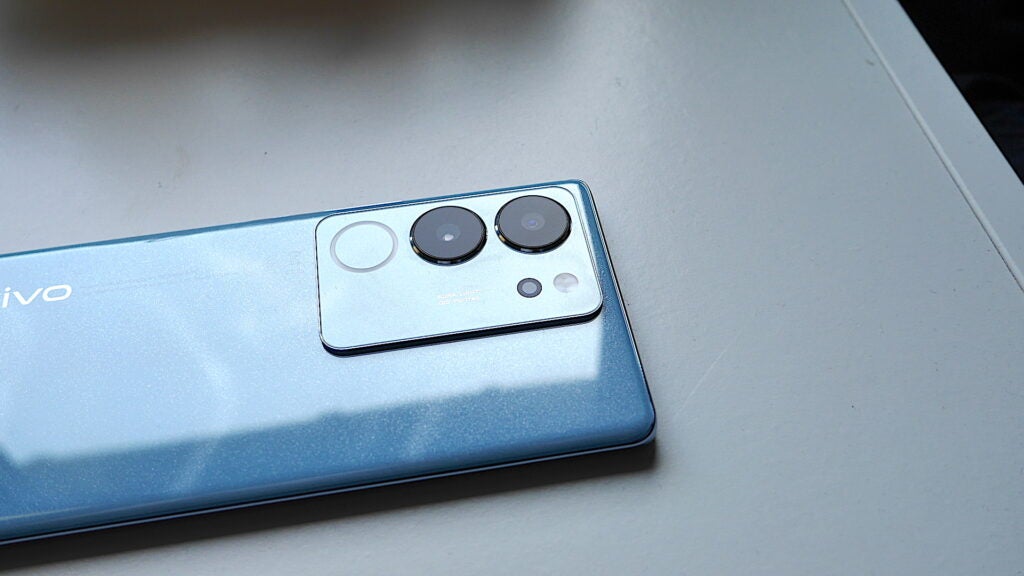
For the price, the Pixel 7a has a Tensor G2 chipset, which is more powerful but has issues with thermal performance and power efficiency. The Redmi Note 12 Pro Plus has a MediaTek Dimensity 1080, which performs similarly when scrolling through the interface but better in general when gaming.
And it is gaming that might be considered the Achilles heel of the Vivo V29. While it has enough oomph to handle the likes of PUBG at a high frame rate with decent detail levels, it has a tendency to become hot after extended periods of gaming. For those who want a good selfie, this might not matter, but our roundup of the best gaming phones may serve budding mobile gamers a little better.
When it comes to audio, the single bottom-firing speaker doesn’t do the best job, getting loud enough but showcasing no stereo presence. There’s no 3.5mm headphone jack either, so wired audio enthusiasts will need to look elsewhere.
On the Bluetooth side, there’s support for aptX HD and aptX Adaptive which means that supported Bluetooth earbuds will sound a little clearer and fuller. Audio performance is not a focus of this device, however.
Software
- Runs Funtouch 13
- Based on Android 13
- Mostly smooth and laid-back skin
As is to be expected with any device that has an origin in the East, the V29 comes running Vivo’s particular flavour of Android, the somewhat creepily named ‘FunTouch’.
In the past, this, as with many other of these skins, had a reputation for being overbearing, confusing and buggy. Time has changed a lot of that for the better.
What might have once been a bag of options and features without any polish is now a ‘standard’ Android interface. A swipe to the left reveals the Google Discover pane, while a swipe to the right or up reveals apps. A swipe down brings the notification shade down. In the settings there are plenty of options for customisation, and blessedly few advertisements for Vivo’s own services, something Xiaomi is terrible for.
Thankfully the Vivo comes with the latest Android 13, with all of its bells and whistles, however there are no promises regarding software updates. Vivo doesn’t have much of a foothold in the UK and other BBK subsidiaries are reportedly withdrawing their business from Europe, so you may not get updates in the long term.
Battery life
- 4,600mAh battery
- 80W fast charging
Despite its slim dimensions, the Vivo V29 comes with a fairly substantial 4,600mAh battery pack, and with a relatively weak and power-sipping processor, the ingredients are there for good battery life.
And for the most part that is what the Vivo exhibits. Waking at 7am and using it continuously across a ‘standard’ day of calls, messaging, social media, camera recording and GPS, I saw it reach 30% by 8pm. This means it, as most any smartphone can easily do now, will last a full day of usage for most people.
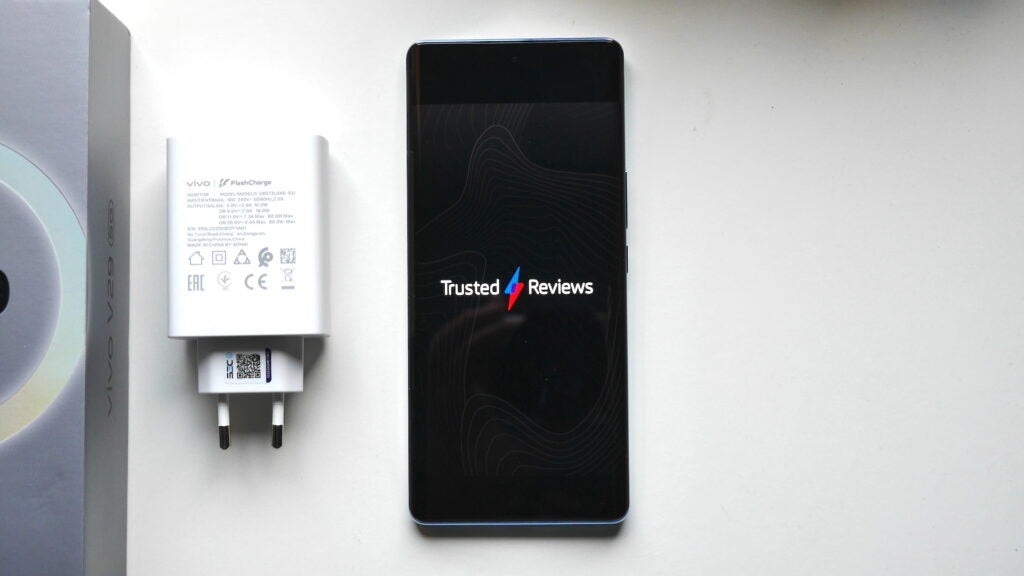
The game changer here is of course fast charging. At 80W, what the V29 can offer is quick. More specifically, the V29 can charge from flat to 100 in just under 40 minutes. That’s enough to top up quickly before a night out, if not as fast as the 120W offered by the Xiaomi Redmi Note 12 Pro Plus.
If you frequently have only ten minutes in a day to charge your smartphone, that will be a better option, but for most the Vivo will easily suffice. Happily, a charger comes in the box but it is European so an adapter will be required.
Latest deals
Should you buy it?
You want a great camera experience: The Vivo V29 is one of the most capable midrange camera-focused smartphones available on the market.
You want the most powerful smartphone: While it is good enough for everyday use, the Vivo V29 isn’t the most powerful midrange smartphone.
Final Thoughts
The humble selfie is arguably unfairly maligned – it is how we place ourselves in a scene, often with friends, to record our best memories. A smartphone focusing on great front camera quality is therefore a no-brainer, and the V29 makes a great case for reintroducing the ‘selfie-first’ smartphone.
As might be expected, its selfies and indeed photos across the board are exceptionally impressive, showcasing something close to flagship quality. That it has good looks, a decent screen, strong battery life and enough power is therefore proof that it is nearly the complete package, with a few caveats.
Sporting only a bottom-firing speaker, it isn’t the best for multimedia, its video recording chops aren’t the best and the relative lack of power means it isn’t the best for hardcore gamers. The lack of stated long-term software support is a further disappointment, which will hit any future resale value.
The Google Pixel 7a has better video, more power and longer software support, while the Xiaomi Redmi Note 12 Pro Plus has faster charging, a better screen and more power. The V29 is the best option for people looking for a camera-first phone at a price that doesn’t break the bank. If that is you, then this will be your ideal device.
How we test
We test every mobile phone we review thoroughly. We use industry-standard tests to compare features properly and we use the phone as our main device over the review period. We’ll always tell you what we find and we never, ever, accept money to review a product.
Find out more about how we test in our ethics policy.
Used as a main phone for a week
Thorough camera testing in well-lit and low-light conditions
Tested and benchmarked using respected industry tests
FAQs
It’s not currently available to buy in the UK, but you can import the Vivo V29 from parts of Europe where it’s readily available to buy.
Despite its mid-range focus, the Vivo V29 offers flagship-level IP68 dust and water resistance.
Yes, and an 80W charger at that – though there is no UK variant, so you’ll have to use an adapter.
Trusted Reviews test data
Jargon buster
IP rating
An abbreviation for ‘Ingress Protection Code’, which lets you know to what extent a device might be waterproof or dustproof.
mAh
An abbreviation for milliampere-hour and a way to express the capacity of batteries, especially smaller ones in phones. In most cases the higher the mAh, the longer the battery will last but this isn’t always the case.
OLED
Organic Light Emitting Diode is panel technology that allows each individual pixel to produce light rather than relying on a backlight. This enables the screen to accurately display blacks by turning off the pixel, resulting in improved contrast compared to conventional LCD panels.
Refresh Rate
The number of times the screen refreshes itself per second.

